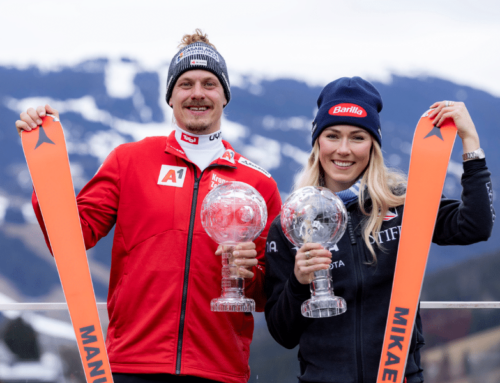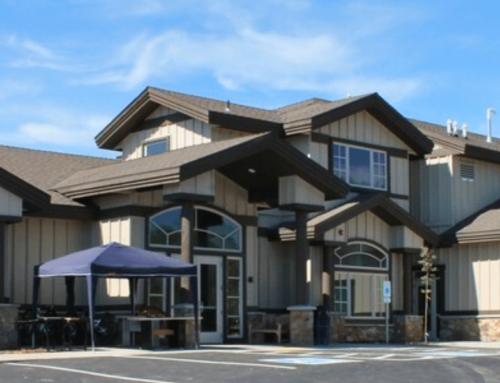This is (Not) Only a Test: The Norwegian Ironman Was Born in the USA
Olympic Medalist Ryan Cochran-Siegle testing at the COE
Photo: US Ski Team
The common refrain in Alpine skiing goes something like: “Norway does this, Norway does that.” It has become standard in the ski racing world to covet everything about the Norwegians, from their team culture and Attacking Vikings spirit to their results across all disciplines and their untrammeled Olympic success.
The USSS sports science team even has a term for it. “We call it the Norwegian crush,” says US Alpine Sports Science Director Per Lundstam. Ironically, one of Norway’s iconic programs, the physical testing challenge known as the Norwegian Iron Man — has its roots in Park City.
From medals test to marketing gold

Robert Reid, the Director of Sport Science for the Norwegian Ski Federation, worked in US Skiing’s sports science department from 1993-97 before moving to Norway. Lundstam, who worked with Reid and describes him as brilliant, explains with a laugh, “He took our old medals test concept and remarketed it over in Norway.” The Norwegian version capitalized on the motivation factor by creating a point system, awarding T shirts and prestige at various point levels, and publicizing record-breaking efforts at every level to develop positive momentum. It also included minimum criteria by age and competition categories, that were achievable yet firm. Finally, the testing created community, with Europa Cup level national team athletes testing with younger athletes in the spring as part of a development project, and then with the World Cup team in July. This reinforced a tangible next step for athletes throughout the development system. The concept turned physical testing into a national contest, and was a huge success, creating a culture that celebrated physical training and also connected the grass roots to the elite level.
Lundstam sees Skills Quest —the evolution of those Medals Tests— as an even better platform than the Iron Man. “It’s more conducive to more layers in our community,” says Lundstam, who calls Skills Quest an ingredient in a whole system that everyone can participate in and unify around. Skills Quest tests can be conducted virtually anywhere locally — including at clubs, schools, camps and events – while High Performance Centers across the country can take the testing to the next level with more sophisticated equipment and technology. All the testing data can be aggregated, analyzed and used to form insights that improve our national training. “When we have a higher level of quality on what we do, and more unifying ingredients that penetrate through our whole system, club coaches, regional coaches, athletes—they feel like they’re actually a part of this whole thing that we’re trying to move forward.”
Why testing matters
Why do NGBs like USSS and Norway care so much about testing at all levels? The benefits are fairly obvious at the elite level, where athletes are looking for the advantages that will put them on the right side of that razor’s edge of high performance. Lundstam recites a common saying in the sports science world, “What you don’t measure you can’t manage.” Testing allows for physiological mapping that helps guide the direction and progamming for each athlete. It also shows how the body adapts physiologically to skiing throughout a season. “Many times, for example, we see that the athletes get more explosive and they jump further and higher and get faster from skiing,” says Lundstam, who says it all comes down to improved decision making. “The more relevant the testing we can do, the more informed decisions we can make.”
But testing is not just important at the elite level. It is especially important for younger athletes and especially in ski racing. To understand why, a quick lesson on the unique physiology of skiing.
The force really is with you
Skiing is unlike other sports in the type and degree of forces it puts on the body. Instead of pushing up against a weight or jumping off the ground, skiers are constantly resisting the extreme centripetal forces being put on them. This is eccentric loading, and skiers have to do a lot of it. As Lundstam points out, Olympic powerlifters are about 4-5 percent stronger eccentrically than concentrically, while top ski racers are 25 percent stronger eccentrically than concentrically.
These forces also come in multiple directions, from actual direction changes, as well as the accelerations and microvibrations to which the body is constantly adjusting. While skiing looks pretty slow on a macro level, on the micro level it is a different story. “There are a lot of vibrations and with that changes in the joint angle and then also in the muscle direction. So it’s eccentric/concentric/eccentric/concentric at a very fast pace,” explains Lundstam. “We think that’s why we see those changes in the physiology, where our athletes get more explosive and faster when they are skiing. It is such a high neurological input into the system.”
One word, kids: Plasticity!

Testing helps identify the unique loads ski racing involves, and can be used to create training programs that incorporate them at an early age. “We need to figure out how we expose younger athletes to that environment to prepare them for it when they are more plastic in their tissue and in their neurological system.” Before a certain age, athletes have more plasticity, meaning they can still change the way their bodies perform, and ultimately their peak potential. These changes to muscle architecture get much more difficult later. (Look for more on that, and on the skills and training that are most important to develop in young ski racers in an upcoming article). Another major benefit to using testing to evaluate and address specific needs, for the sport and for individual athletes, is injury prevention.
On a purely individual level, Lundstam calls testing“an opportunity for each individual to improve their trajectory of development.” By understanding and exploiting the opportunities within each athlete’s physiology, coaches can create appropriate programs. As a nation, however, we also stand to gain big benefits from high quality and widespread testing, from the familiar, easily administered Skills Quest tests to the higher level testing at the High Performance Centers. That include Force Plate testing, and hopefully soon, the newly developed SEGR leg press to test and train eccentric strength.
“Suddenly, we start to be pretty connected,” says Lundstam. We hope that that makes everybody feel like we really are in this together, that we want to understand how our athletes are developing and how we can develop them better.
Look for upcoming article on what skills are key for in high level skiers, and what type of training is most important for younger athletes.





















